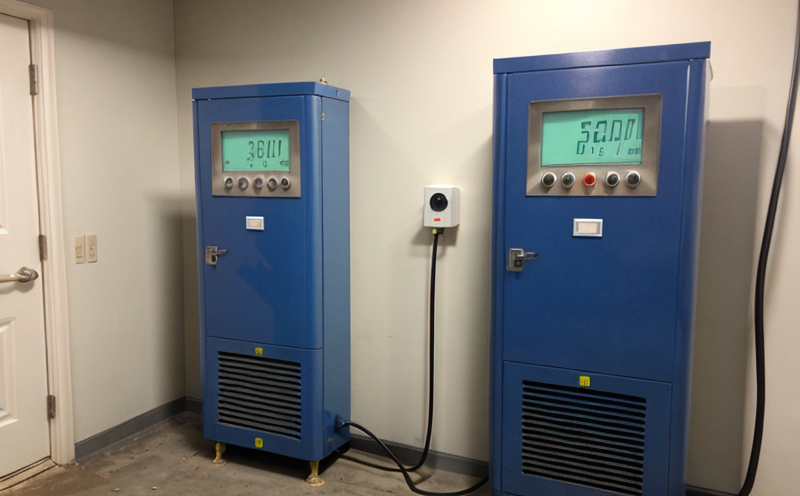EN 14530 Ventilation System Airflow Performance Testing
The European standard EN 14530 provides a framework for testing and assessing the performance of ventilation systems in mines. This standard is crucial for ensuring that mine ventilation systems operate efficiently, safely, and according to design specifications. The primary objective of this test is to verify that the airflow through the ventilation network meets the required parameters as defined by the standard.
The ventilation system in a mine plays a critical role in maintaining air quality and safety. Efficient ventilation ensures that harmful gases are expelled from the working areas, while fresh air is supplied to maintain breathable conditions underground. The EN 14530 test focuses on airflow performance, which includes measuring the volume of air flow, pressure drops, and other parameters relevant to the system's operation.
The testing process involves a series of steps that are designed to ensure accuracy and reliability. Initially, the ventilation network is mapped out in detail, identifying all components such as fans, ducts, grilles, and diffusers. The test begins with an initial inspection where all equipment is checked for proper functioning before any measurements are taken.
The actual testing phase involves placing a calibrated flow meter at strategic points within the ventilation network to measure airflow rates accurately. Pressure sensors are also deployed to gauge pressure drops across various sections of the system. Data collected during these tests is then compared against design specifications and expected performance levels as outlined in EN 14530.
Once all data has been gathered, it undergoes rigorous analysis using statistical methods to ensure accuracy. Any discrepancies between actual measurements and specified values are documented along with recommendations for necessary adjustments or improvements. This comprehensive approach ensures that mines comply not only with local regulations but also international standards like ISO 14050 which emphasizes environmental management systems.
The results of this testing play a vital role in several aspects of mine operations. For instance, they help identify areas where energy consumption could be reduced without compromising safety or efficiency. By optimizing airflow patterns, mines can save on operational costs while enhancing working conditions for miners. Additionally, compliance with EN 14530 helps minimize risks associated with poor ventilation leading to safer work environments.
In summary, conducting EN 14530 Ventilation System Airflow Performance Testing is essential for maintaining optimal functioning of mine ventilation systems. It ensures that these critical facilities meet both regulatory requirements and operational needs effectively.
Industry Applications
- Mining companies looking to ensure compliance with international standards like EN 14530.
- R&D departments seeking accurate data on airflow performance for continuous improvement.
- Quality managers responsible for verifying that ventilation systems perform as intended.
- Compliance officers ensuring adherence to legal requirements related to workplace safety.
Quality and Reliability Assurance
The quality assurance process in EN 14530 Ventilation System Airflow Performance Testing involves several key steps aimed at ensuring high standards of accuracy, reliability, and consistency. Firstly, all equipment used during the testing must be calibrated according to ISO 9001 guidelines before use. This ensures that measurements taken are precise and repeatable.
During data collection, care is taken to ensure that no external factors interfere with accurate readings. For example, temperature variations or changes in atmospheric pressure can affect airflow measurements significantly. To mitigate such issues, tests are conducted under controlled conditions whenever possible.
The analysis phase plays a crucial role in identifying any deviations from expected performance levels. Any discrepancies found during testing are thoroughly investigated to determine their cause and impact on overall system performance. Recommendations for corrective actions are provided based on these findings.
Finally, the results of the test are documented comprehensively following ISO/IEC 17025 standards for laboratories. This documentation includes detailed descriptions of the testing procedures followed, raw data collected, analysis methods used, and final conclusions drawn from the study.
This rigorous quality assurance process ensures that EN 14530 Ventilation System Airflow Performance Testing meets the highest levels of accuracy, reliability, and consistency. By adhering to these strict protocols, mines can have confidence in their ventilation systems' performance knowing they meet international standards and are optimized for both safety and efficiency.
Competitive Advantage and Market Impact
Complying with EN 14530 Ventilation System Airflow Performance Testing offers significant competitive advantages in the mining industry. It demonstrates a commitment to safety, efficiency, and environmental responsibility that can set a company apart from its competitors.
Firstly, meeting these stringent standards enhances operational reliability, reducing downtime due to equipment failures or suboptimal performance. This translates directly into lower maintenance costs and increased productivity, giving mining operations a clear edge in terms of cost-effectiveness.
Secondly, compliance with international standards like EN 14530 can help attract investment from reputable sources seeking assurance that their investments are made in safe environments aligned with global best practices. This reputation for excellence can also lead to better relationships with stakeholders including employees, regulators, and customers.
Lastly, by ensuring continuous improvement through regular testing according to EN 14530, mining companies position themselves as leaders in sustainable development within the industry. This proactive approach not only supports long-term viability but also fosters innovation and advancement in technology for safer working conditions underground.





